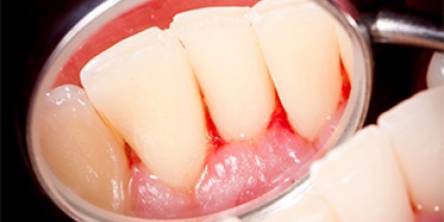The Tooth Dilemma: When It's Time to Say Goodbye to Your Pearly Whites

Ah, the bittersweet moment when a tooth has overstayed its welcome. It’s been with you through thick and thin—chewing your favorite snacks, smiling in photos, and grinding during those stressful nights. But now, it’s time to part ways. Whether it’s a cranky wisdom tooth or a molar that’s seen better days, knowing when it’s time for a tooth extraction can save you a lot of pain (and maybe a few sleepless nights). Let’s break it down and figure out when to say goodbye to that stubborn tooth—and how to do it with a smile.
Why Do Teeth Have to Go?
Teeth, like houseplants, need some TLC. But sometimes, no amount of flossing or mouthwash can save one. Here are a few reasons why you might need a tooth extraction:
- Severe decay: Sometimes, a cavity gets out of control, and even the best dentist can’t rescue it. When your tooth turns into a tiny menace of decay, extraction might be the best option to protect the rest of your smile.
- Crowding: Your teeth love socializing, but sometimes they get too close for comfort. If your mouth is overcrowded, an extraction can free up some and set the stage for orthodontic magic.
- Infection: A nasty tooth infection can spread like gossip in a small town. If antibiotics and root canals can't save the day, an extraction might be necessary to stop the infection from spreading.
- Impacted teeth: Impacted wisdom teeth love lurking under the surface like an awkward high school memory. If they start causing pain or discomfort, a tooth extraction is the only way to free your smile.
The Tooth Extraction Process: It’s Not as Scary as You Think
The word "extraction" might sound intimidating, but it’s not as medieval as you imagine. When you walk into the dentist’s office for a tooth extraction, they’re not armed with pliers from the garage. Modern tooth extractions are pretty smooth (and, dare we say, gentle?) thanks to numbing agents and advanced tools.
First, your dentist will make ensurere comfortable and numb the area—trust me, you won’t feel a thing. Then, with precision and care, they’ll remove the tooth. Sometimes, they may have to do a surgical extraction if the tooth is stubborn or impacted. Either way, the whole process is usually over before you can say, "Wait, that’s it?"
What Happens After the Tooth Leaves the Party?
Now that your tooth has officially retired, it’s time to heal. Your dentist will give you instructions on how to take care of your mouth post-extraction, which usually involves resting, avoiding certain foods, and maybe binge-watching your favorite shows as an excuse to avoid anything too crunchy.
Swelling, discomfort, and some ing are normal, but the healing process kicks in quickly. Before you know it, you’ll return to your normal routine (and enjoy a soft-serve ice cream diet for a couple of days, if you’re lucky!).
When to Reach Out for Help
Even though extractions are routine, there are times when you might need extra help. If you notice severe pain, prolonged bleeding, or signs of infection, it’s essential to contact your dentist or search for a “tooth extraction near me” to get professional advice. Your mouth deserves the best care, after all!
The Final Word: It’s Okay to Let Go
Saying goodbye to a tooth can feel like the end of an era, but it’s also the start of something better—like a pain-free, healthier smile. Whether it’s a pesky wisdom tooth or a molar that's giving you grief, sometimes it’s just time to part ways. And when that time comes, a tooth extraction is your best bet for a smooth and painless goodbye.
Remember, your smile is resilient, even when it’s down a tooth. So, wave farewell to that pearly white with confidence—it’s been a good run, but your smile is about to get even better!
Similar Articles
Learn 5 signs you may need dentures and discover the steps to get started for a healthier smile and improved quality of life.
Boost patient trust and diagnostic accuracy with high-quality intraoral cameras. Enhance care, improve communication, and streamline operations in your dental practice!
Imagine this: You just walked out of the dentist's office after your laser gum contouring procedure, and your smile is on the verge of greatness: no more gummy grins or uneven gum lines. You’re practically ready to hit the red carpet. But hold up — what happens next? How fast can you expect to heal after your gums get their laser makeover?
Have you ever wondered how orthodontic treatment has evolved over the years? Are you curious about the latest innovations in teeth straightening technology? Have you heard about Invisalign but aren't quite sure how it works or if it's right for you? If you've found yourself pondering these questions, you're not alone.
Gingivitis is an inflammation of the gums that often develops unnoticed in the early stages. However, if left untreated, it can lead to severe complications. In this article, we look at five essential facts about gingivitis that will help you better understand this disease and take the necessary steps to prevent and treat it.
Everyone is looking for that movie star smile but we think to ourselves that it’s going to cost too much money and so we give up on the dream. You would be surprised at what can be achieved at your local dental clinic and people have gone in through the doors and came out a short time later with an unbeatable smile that may be even better than the TV and movie stars that we see every single day
Dental implants fundamentally changed the concept of replacing teeth.
Cosmetic dentistry is a branch of dentistry that focuses on enhancing the function and appearance of a patient's smile. Cosmetic dentistry near you is frequently elective, but it can provide numerous restorative benefits. Depending on the type of cosmetic treatment you have, most are rather easy, while some are more difficult
Tooth pain is a common but frequently misunderstood condition that can have a substantial influence on one's quality of life. Tooth pain can occur for a variety of causes, ranging from minor, short-term sensitivity to severe, devastating pain.









